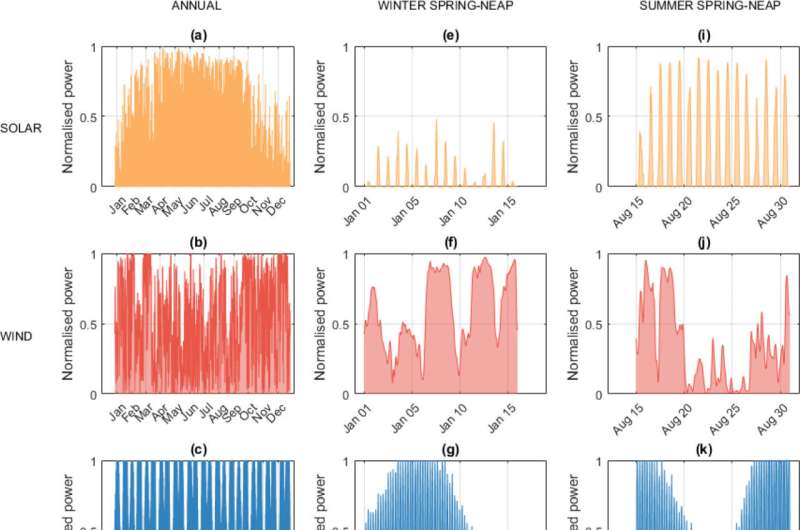
Adopting tidal power alongside other forms of renewable energy can significantly enhance energy security and go some way to enabling communities to fulfill their clean energy ambitions, a new study has shown.
Researchers found that installing tidal stream systems, in addition to solar and offshore wind farms, is around 25% more effective at balancing supply with demand than just relying on solar and wind technologies.
Using tidal technologies as part of a renewable energy mix can also reduce the space required for power-generating facilities, both on land and at sea, by around 33% and significantly reduce their visual impact since much of their operation is below the sea's surface.
It can also help to reduce the levelized cost of whole-system energy, relative to solar and wind systems, because it reduces the requirement to access expensive reserve supplies.
Published in the journal Applied Energy, the study focuses on the Isle of Wight. The island plans to generate as much renewable energy as it consumes, and achieve net-zero emissions, by 2040. To achieve this, it will need to find ways to generate an average of 136MW of electricity through clean energy to meet its future projected annual demand.
Its primary source of power is currently a gas-fired power station and while solar power currently generates 80MW, plans for a nearby offshore wind farm were refused in 2015 on the grounds of its perceived visual impact. The island's tidal stream potential, meanwhile, has not been fully explored.
To understand some of the challenges of achieving the island's goals, researchers developed a model which takes into account the need for supply-demand balancing, the whole-system cost of energy, and the spatial coverage of the renewable energy projects.
They found that installing 150MW of solar power, 150MW of offshore wind, and 120MW of tidal stream capacity maximizes both supply-demand balancing, and the magnitude of maximum power surplus—by 25% relative to the best performing solar and wind systems.
Tidal stream adoption also minimizes the magnitude of maximum power shortages and surpluses across the year by 11% and 24% respectively.
The study was led by Dr. Danny Coles, Research Fellow on the INTERREG V A France (Channel) TIGER Project at the University of Plymouth, working with the European Marine Energy Centre, Hydrowing Ltd, Perpetuus Tidal Energy Centre, and the University of Edinburgh.
Dr. Coles said, "Tidal stream energy provides a predictable, reliable source of renewable power that, if harnessed, can complement the variability of wind and solar. Unlike wind and sun, the tides are present every day of the year. Our results show that adopting a combination of all three can reduce reliance on imported power and volatile prices. This is particularly relevant to the current energy landscape, when cold weather is increasing heating demand and millions will be paid to use less electricity to avoid blackouts."
"As the transition to net-zero energy continues, there is a need to better understand how to build system resilience to overcome periods of high demand and low wind resource. While it is well understood that tidal stream power is predictable and reliable, this research quantifies the system benefits that predictable and reliable tidal supply can provide."
The research is already being used by the Isle of Wight Council and Scottish & Southern Electricity Networks to assess the scope of work needed for grid upgrades on the island.
The results are also being used by Scotia Gas Networks (SGN) in a whole-system study that builds on the research builds on the research and focuses on the island's entire electricity system.